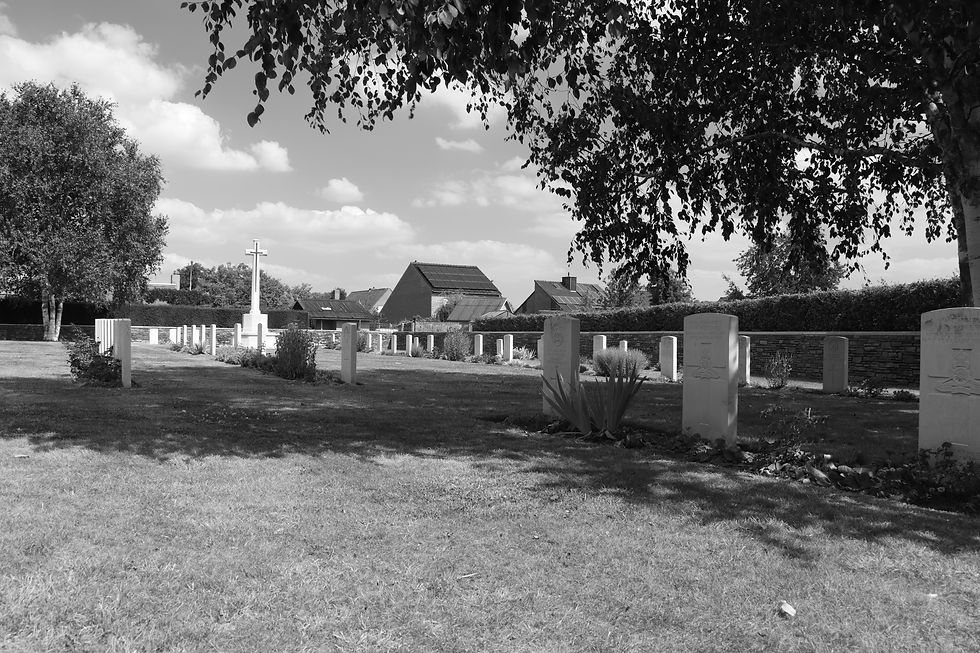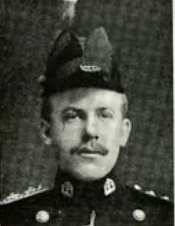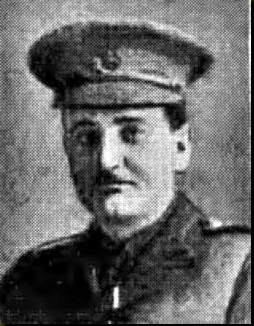Dickebusch Old Military Cemetery
- Admin
- Aug 30
- 6 min read
Updated: Oct 7

The Old Military Cemetery was used as a front line cemetery from January to March 1915. This CWGC cemetery contains 46 First World War burials. There are also ten burials from the Second World War, all dating from late May 1940 when the British Expeditionary Force withdrew ahead of the German advance. The seventy-eight French graves were removed after the Armistice. There were three officers buried in Dickebusch Churchyard and who were relocated to this cemetery on 20 February 1962. Their details are below.
6872 Bugler George Bowden, 4th Battalion King’s Royal Rifle Corps, 80th Infantry Brigade, 27th Division. Died of Wounds 28 January 1915, age 27. Grave B.12. Brother of George Bowden, 104 Tunis Road, Shepherd's Bush, London. He also had a sister Elizabeth. The CWGC records are incorrect. He is listed as Francis John Bowden and that he is the brother of George Bowden. All his records show that his name was George Bowden. On the 28 January, the Battalion rested at Dickebusch until the evening when they proceeded to St Eloi to relieve the Royal Irish Regiment. ‘A’ Company was being led by a guide from the Royal Irish to the line the moon was bright and the guide led the Company across the open fields which drew fire from the Germans. They immediately suffered twelve casualties with the Company Commander, Captain Wingfield, lightly wounded. He found an old trench and ordered the remainder of the Company to take cover in this. He decided to wait until dawn before attempting to make the relief which was completed without further losses. Battalion casualties were 6 Other Ranks killed, 1 Officer, and 10 Other Ranks wounded.
Relocated from Dickebusch Churchyard
Captain Denzel Onslow Cochrane Newton, Princess Patricia Canadian Light Infantry (Eastern Ontario Regiment), Died of Wounds 9 January 1915, age 35. Grave B.2A.
Member of the Royal Victorian Order, Order of the Rising Sun (Japan). Son of the late George Onslow and Lady Alice Laura Sophie Newton of Croxton Park, Cambridgeshire. Educated at Eton, and then the Royal Military College Sandhurst, he was a Captain in the Reserve of Officers with the Middlesex Regiment and saw service in the Boer War. He was then A.D.C. in Canada to his uncle, the Earl of Dundonald, and later Earl Grey, Governor-General of Canada. Following this appointment he acted as Military Secretary to Field Marshal H.R.H. the Duke of Connaught, Governor-General and Commander-in-Chief of the Dominion of Canada, and was holding this appointment when he joined the PPCLI. He was originally buried in Dickebusch Churchyard and was concentrated here on 20 February 1962. He was the first PPCLI officer killed in action, he was shot by friendly fire by Corporal Stanley Fred Alwyn Martin. The Battalion was in the line at La Brasserie at Bois Quarante in front of Wytschaete. He had lost his way in the darkness, walking through the lines between two outposts and found himself in No Man’s Land. Turning back, he was challenged by Corporal Martin, but failed to hear the challenge, and Martin fired wounding Newton in the abdomen. Martin recognised Newton’s voice as he fell and climbed over the parapet to drag him to safety. He was to die of his wound within hours at No.3 Canadian Field Ambulance at Vierstraat, just shortly after the first two PPCLI casualties of the war, Corporal Norman Fry in listed on the Menin Gate Memorial Panel 10, and Lance Corporal Henry George Bellinger, buried in Voormezeele Enclosure No.3, Grave III.K.3. Corporal Martin was later promoted to Sergeant, he suffered a GSW to his pelvis and thigh in January 1915. Promoted Lieutenant on 8 January 1915, and Captain in December of 1915. In the Field, promoted Major on 6 September 1916. Major Stanley Fred Aylwyn Martin killed in action 15 September 1916.
Captain Roger Charles Noel Bellingham Mentioned in Despatches, 37th Battery, Royal Field Artillery, Killed in action 4 March 1915, age, 30. Grave Special Memorial.
Second son of Sir Henry Bellingham, 4th Bart, and Lady Constance Bellingham, of White Mills, Castlebellingham, Co. Louth. Husband of Alice Ann Bellingham and they had a son and a daughter. Educated at the Oratory School, Birmingham, and then the Royal Military Academy at Woolwich. Gazetted in the Royal Artillery in December 1903 and promoted to Lieutenant in December 1906. He retired from the active list in 1912 and joined the Special Reserve. Before the war he was ADC to the Earl of Aberdeen when he was Lord Lieutenant of Ireland. On the outbreak of the war he was called up and attached to the 37th Battery being specially commended for bravery by his Commanding Officer and mentioned in Field Marshal Sir John French Despatch of 31 May 1915. His promotion to Captain from October 1914 was not gazetted until May 1915. He was found dead in his dugout. He was originally buried in Dickebusch Churchyard however, when they came to move his body on 20 February 1962, to the Old Military Cemetery across the road, they could not locate his body. He was given a Kipling Memorial ‘Their glory shall not Be blotted out’.
Second Lieutenant Valentine Douglas French, 5th Battalion King’s Shropshire Light Infantry, 42nd Infantry Brigade, 14th Division. Killed in action 17 June 1915, age 26. Grave Special Memorial. Son of the Hon. John and Nani French, Curraghbridge, Adare North, Limerick, Ireland. He had four brothers and four sisters. He was commissioned in the 5th Battalion Royal Munster Fusiliers on 31 March 1906 as a Second Lieutenant however, he resigned his commission on 2 August 1908. After the outbreak of war he was commissioned as a Second Lieutenant in the 5th Battalion King’s Shropshire Light Infantry. The War Diary records that on the 16 June the Battalion had gone up in support of the attack at Bellewaarde. They had come under very heavy shell fire in the support trenches. Battalion casualties were 2 Officers killed, 2 wounded, one being Valentine who later died of his wounds, Other Ranks 11 killed, 57 wounded, and 1 missing. On the 17 June the War Diary recorded Valentine dying of his wounds. He was originally buried in Dickebusch Churchyard however, when they came to move his body on 20 February 1962, to the Old Military Cemetery across the road, they could not locate his body. He was given a Kipling Memorial ‘Their glory shall not Be blotted out’.

Major Percy Thomas Charles Baird, 2nd Battalion Cameron Highlanders, 81st Infantry Brigade, 27th Division. Killed in action 15 February 1915, age 42. Grave B.2. Son of Col. A. W. Baird, C.S.I., F.R.S. (R.E.), of Palmers' Cross, Elgin. His father was a Colonel in the Royal Engineers when in India. Percy was born in India and was a career soldier receiving a commission in the 2nd Battalion in 1894 when age 21 and served in Malta. He also served in Gibraltar, Crete, South Africa, China, and India, becoming a Major in August 1912. The Battalion arrived in France on 20 December 1914. The Battalion was in the line at St Eloi on 15 February 1915, with Battalion HQ in Bus House. ‘A’ and ‘D’ Companies occupied the left and right sectors with ‘B’ Company in support in trenches on the right of the road between Bus House and The Mound. ‘C’ Company were in support in Voormezeele. The Battalion relief due at 9.30pm was suspended until 10pm due to heavy shell fire north of St Eloi and the Battalion was relived at 11.30pm. The War Diary records that Percy was killed at 9.30pm by a shell wound to the throat received when at the crossroads by the church in Voormezeele. His funeral took place on 17 February at 8am with the War Diary recording that his grave was ‘in field E of church. Dickebusch.’
Location
From Ieper town centre the Dikkebusseweg (N375), is reached via Elverdingsestraat, straight over a roundabout onto J.Capronstraat (for 30 metres), then left along M.Fochlaan. Immediately after the train station, the first right hand turning is the Dikkebusseweg. On reaching the village of Dikkebus, the cemetery is located on a street called Neerplaats. Turn left off the Dikkebusseweg into a small street called Kerkstraat and then 200 metres along this street, just beyond the village church, left into Neerplaats. The cemetery forms the southern side of this street.

The cemetery was designed by J. R. Truelove
Burials
UK – 41
Canadian – 3
German – 1
WWII - 10

















Comments